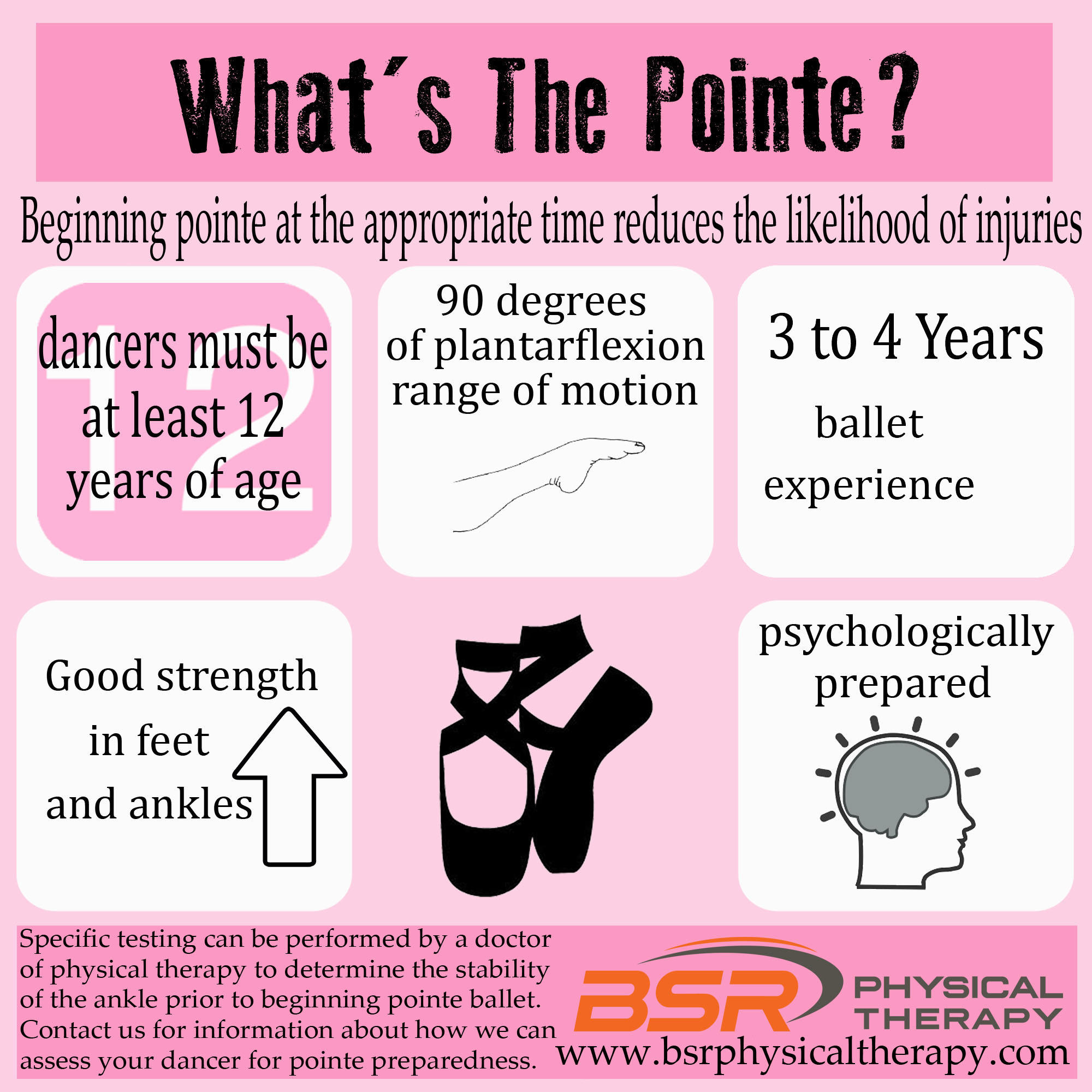Dancers require unique strength and flexibility, which other performers and athletes do not. Because of this, they are prone to injury if not physically prepared for training and performances. One way to reduce incidence of dance injury is to ensure that the dancer is physically and psychologically prepared for pointe work. The exciting part is that there are ways to test whether your dancer is ready to put on those pointe shoes!
In order to be prepared for pointe, she should be over the age of 12 and have several years of dance experience. Now is when your physical therapist comes in! You need adequate strength in your feet, as well as flexibility into plantar flexion (pointing your feet). Additionally, there are dancer specific tests that your PT can assess including the Topple, Saute, and Airplane tests. For the Topple test, the dancer will perform a single pirouette with good control during the turn as well as the landing. The Saute test is comprised of a single leg jump performed 16 times consecutively. The dancer must have good control and form with 8/16 of these jumps. Lastly, the Airplane test is completing 5 single leg squats while your trunk and back leg are parallel to the floor. Your therapist will assess the alignment of your lower extremity as you perform this movement.
So before you put on your pointe shoes, see your physical therapist to assess whether you are ready for this advanced form of dance. The last thing you want to do is begin training en pointe without the adequate strength, neuromuscular control, and flexibility that pointe requires – this can land you off your feet and with an injury!
By
Dr. Amanda Edwards, PT, DPT, OCS

